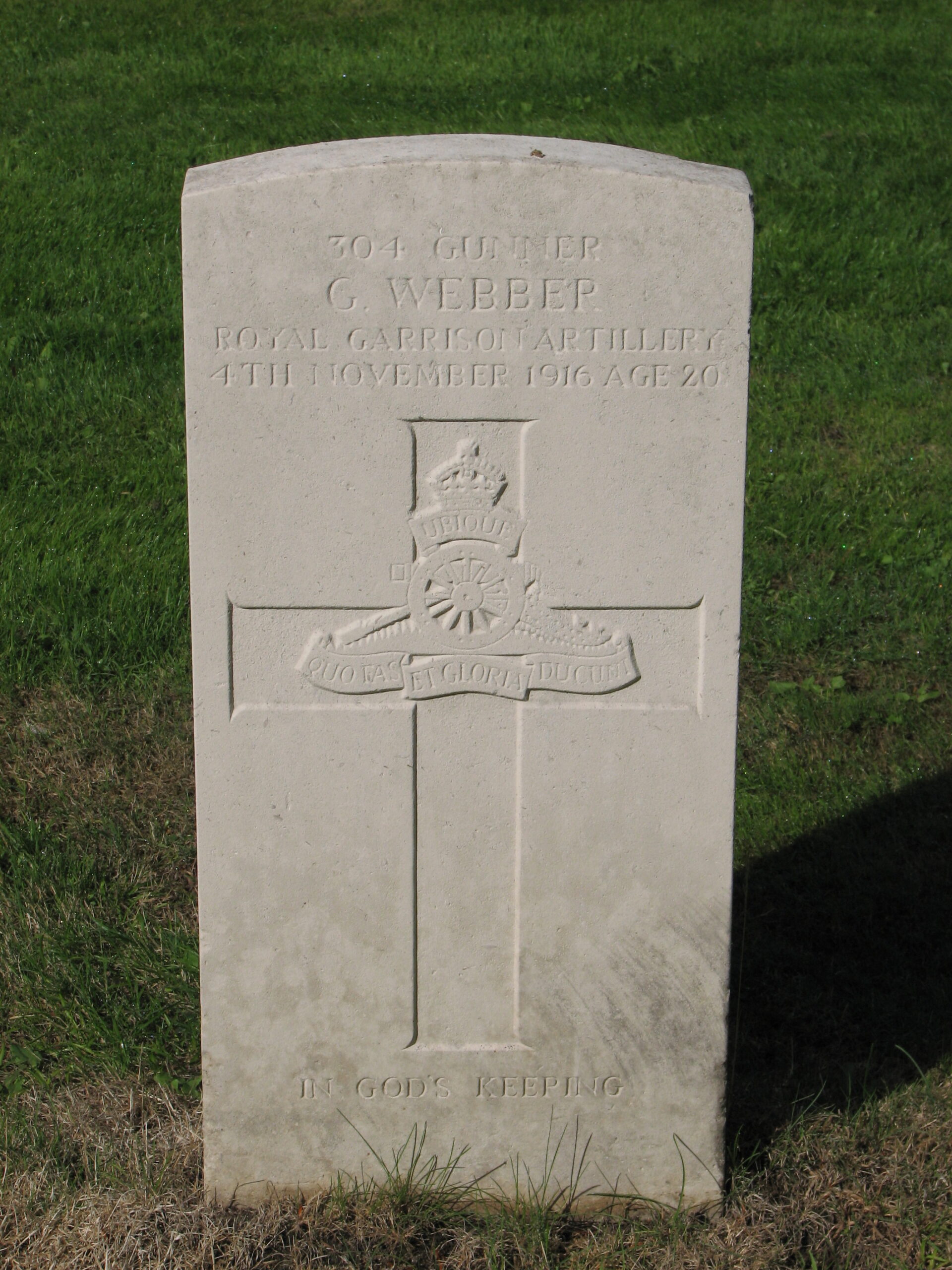George Webber (1896 - 1916)
George left his job at the Xylonite Factory at Brantham and volunteered to join the Royal Garrison Artillery arm of the Territorial Force. He was killed in a tragic accident before he saw any overseas service.
- 65
- Died in the Great War
- 51.960165, 1.047105
Details
| Name: | George Webber |
| Service: | British Army |
| Unit: | Royal Garrison Artillery |
| Regimental Number: | 304 |
| Rank: | Gunner |
| Date of Death: | 4th November 1916 |
| Age: | 20 |
| Buried: | East Bergholt Cemetery |
Family Background and Early Life
George Webber was born at Maltings Lane in the Suffolk village of Clare on 26 February 1896.
George’s father, who shared the same Christian Name, was originally from Boxford, and at the time of his son’s birth was a Driver for the Royal Mail. In 1886, he had married Mary Tompsett who had been born in Wadhurst, Sussex, and together they would have 7 children though one died in infancy.
Young George started his education at the school in Clare, before transferring to Brantham when the Webber family moved to the village in December of 1907. George’s father was employed as an Engine Driver at Brantham Mill, and the family lived nearby at West Green Cottages.
In January of 1909, both George and his younger sister Kate transferred to East Bergholt School, at Burnt Oak Corner.
George left school on 25th February 1910, and – for a time at least – was employed as an Errand Boy. Later on, he was employed at the Xylonite factory at Brantham in the Scrap Department.
Joins the Territorial Force
On 26th October 1915, George volunteered to join the Royal Garrison Artillery arm of the Territorial Force (the forerunner of the Territorial Army). By this stage of the War – and for a man of George’s age – there was effectively little difference between the Territorial Force and the Regular Army branches of this unit.
George never saw overseas service, and the only place we know he was stationed was in the vicinity of the village of Standon, near Bishop Stortford.
On the evening of Saturday 4th November 1916, George, and four other soldiers left an inn at Standon. It was stated later that all were perfectly sober. It was raining hard, and the wind was blowing in their faces, so – despite notice boards warning people not to do so – the party decided to take a short cut and went along the railway line. George – along with one of the others, was in the lead.
As they entered a cutting, one of the party suddenly noticed that a train was almost upon them. It was reported that “He jumped clear of the line shouting “Look out”, and fell on the side of the line. When he got up George was missing, and on searching they found him lying dead on the off side of the line. His skull had been badly fractured.” 1 From a report in the “Suffolk Chronicle and Mercury”, Friday, 17 November 1916.
The following Wednesday, the Coroner for the Bishop Stortford district, held an inquest at the Standon Institute, and in summing up stated “the soldiers took a short cut along the line, where they ought not to have been, owing to the extremely rough weather on Saturday night, and deceased was caught by an engine and killed.” 2 Ibid.
The Jury returned a verdict of “Accidental Death”.
George’s body was brought back to East Bergholt, where he now rests in the village Cemetery.
Copyright © Mark Ashmore, 2024
- 65
- Died in the Great War
- 51.960165, 1.047105


